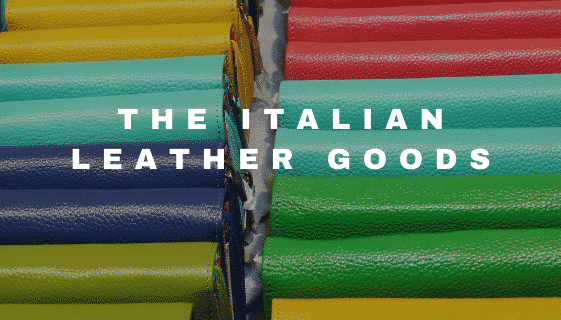Made in Italy is synonymous with safety and quality all over the world and leather goods is one of the sectors where it excels most. Leather bags, suitcases, gloves and accessories are synonymous with tradition and exclusivity of our manufacturing industry.
Italy is leader not only in the production of leather, but also in the production of final products of high value.
How the leather goods sector was born
Since prehistoric times man has used the skins of animals hunted to cover, but given the biological nature of the medium it tended to decompose and rot in a short time. First with the drying and then with real chemical processes born from the repetition and experimentation, the tanning process was born that has developed until today with the introduction of safer and more sophisticated methods.
The first steps towards the development of a chemical-physical process that improved the quality, durability and resistance of the skin happened almost by chance, noting how drying and smoking lengthened the life of the skin immediately after removing it from the animal.
As a result of this it remained hard and dry, they thought to add animal and vegetable fats to soften it and make it moldable.
The search for more and more effective methods to combat its putrefaction led to the development of the first real method of vegetable tanning, which consisted in immersing the leather in large tanks full of water, bark, leaves, berries. The earliest written sources of these tanning methods date back to the thirteenth century BC and, although there were developments in the techniques used, artisans and skins continued to use very similar methods until the late nineteenth century, working in small workshops with a mostly artisanal process
The birth of chrome tanning, whose patent dates back to 1910, was an important watershed, bringing production to an industrial level. The use of trivalent chromium allows the same process to be carried out for any type of leather, effectively automating all processes.
Currently all the treatment of the leather is carried out inside of great companies that can bear the costs for the realization of the complex passages that compose it, but keeping the prices as low as possible.
In Italy the tanneries are distributed in industrial districts, between which stand out the District of the Leather of Santa Croce sull’Arno, the District of the skin in Veneto, the Campania District and Lombardy. The tanning industry exports 73% of its production abroad and, qualitatively speaking, is valued as the most valid in the world.
Leather goods in Italy
Over the years, Italy has always maintained its status as the best producer of leather products. Whether it is the raw material or the finished product, the tanning and manufacturing tradition of our country has no equal in this sector.
Initially, leather garments and accessories were used as the only source of protection against the cold, but over time, given the durable and comfortable nature, leather was also used in the military for the construction of armor.
Around the twelfth century the production became such as to allow the realization of fine clothing, which sparked a great demand from the highest social classes. The new trade routes led to the spread of knowledge between different cultures and the tanning gradually became more effective and diversified. In 1200 in Florence was established the Guild of Cuoiai and Galinai, which in addition to bringing together all the artisans involved in the processing of leather, forced them to submit to regimes such as to ensure an excellent production quality.
From an element dedicated only to the highest social strata, already in the sixteenth century it became a material of common use for the realization of accessories. In a short time comfort and practicality then gave way to luxury and elegance, combining common use with the search for aesthetic beauty.
The term leather goods was born in 1835 following the realization of the first portfolio and from here the industry began its real expansion. Florence, the largest Italian district, as well as the entire area crossed by the Arno, had the opportunity to develop up to the current levels thanks to the presence of river waters. Finally, in the twentieth century, what is now the leather manufacturing sector was reached, with the development of the latest technologies and the creation of the various districts that characterize Italian industrial production.
The presence of these large production centres, combined with the expertise of craftsmen and designers, has made leather goods one of the most appreciated and recognized sectors in the world. Its millennia of history and development have led to the treatment of waste arising from farming to become a true art form that gives work to 1200 companies and represents about 22% of the world’s tanning production.
The artisans who work every day with the leather, to realize the final products from the highest quality, are among the main responsible for the great success that the Italian manufacture has all over the world. The skilful workmanship and the great attention to detail employed by our professionals is a source of pride and recognition of a tradition always in search of excellence.




